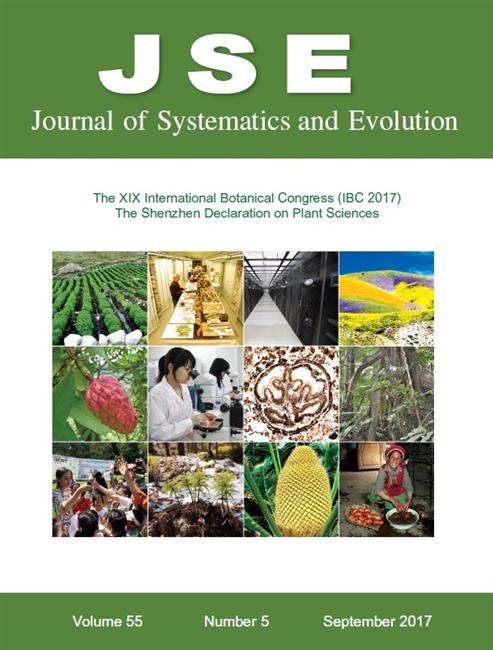Table of Contents
-

Volume 55 Issue 5
Cover illustration: The cover image is designed for the Shenzhen Declaration on Plant Sciences by Genlin Jiao, Alice Tangerini and Jun Wen. Photo credits go to Chip Clark, Genlin Jiao, Hong Jin, Sandra Knapp, Steven Manchester, Jun Wen, Bob Wick and Li Zhang. The picture on the top row (right) appeared in the Los Angeles Times on April 7, 2017. See Ge & Wen, pp. 411–414, and Shenzhen Declaration Drafting Committee, pp. 415–416, in this issue.
Editors-in-Chief
Song Ge
Jun Wen
Song Ge
Jun Wen
Impact Factor
3.7
JCR 2022 IF ranking: 60/238 (Plant Sciences, top 25%, Q2 quartile)
Journal Abbreviation: J Syst Evol
CN: 11-5779/Q
Frequency: Bi-monthly
Journal Abbreviation: J Syst Evol
| ISSN: | 1674-4918 (Print) 1759-6831 (Online) |
Frequency: Bi-monthly

Scan to view the journal on your mobile
device
device

Scan to follow us on WeChat







